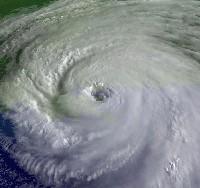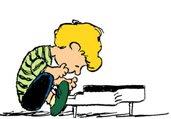New Orleans search, rescue, and relief operations
In the lower Ninth Ward this past weekend, I heard the story of a woman who, when water started coming through her neighborhood, ran into the house to change her shirt. Who knows why. Maybe she thought she had time. When she went into her house, the water was up around her shins. By the time she changed her shirt, the water was up around her waist. She exited the house and was swept up by the water. The current was taking her along, and fearing she might drown, she grabbed at a tree branch. The branch bounced back and flung her onto a rooftop. Secure for the moment there, she watched as another person struggled in the water. A teenager grabbed a branch in the same tree, and it flung him up into the tree. There they were - she on the roof, and he in the tree, talking, for three days until they were rescued. What goes through a person's mind as the hours pass. Do you sleep? Can you sleep?
Everyone has a story to tell in New Orleans. Some, like this one, are tales of life-threatening circumstances which underscore the good works by emergency workers and private individuals who rescued thousands of people.
The Times-Picayune:
Todd's description of his initial rescue efforts mirrors the tales that have come from many other people involved in volunteer rescue efforts in New Orleans and other hard hit areas.
He said he remembers how some older residents cried with joy when he pulled up to their house, and he cried right along with them. He chuckled when he described squeezing 10 people into a boat built for only three or four and "putt-putting" to higher ground.
Coming soon, another podcast on the operations center in the lower Ninth Ward where people are learning for the first time that their houses can't be salvaged, and seeing for themselves the biblical scale of destruction. Because of the height of debris piles, collapsed houses, and buildings that have collided together, the search for remains is difficult, but sadly, remains are still being found.
More than 1000 people died in the storm and its aftermath. Depending on who you ask, anywhere from 4000 to 7000 people remain missing.
Does this not call for dramatic measures to: 1) provide relief (it's over two months after the storm and people still don't have a place to live)?; and 2) make sure this never happens again by committing NOW the resources required to build a Category 5 storm protection system?
Can we have a president who doesn't just roll up his sleeves and pat people on the back for "doing a heckuva job?" Can we have a president who doesn't just force rescue workers to stop what they're doing so he can do repeated photo ops? Can we have a president who means what he says when he stands in Jackson Square and says that this nation will do whatever it takes to rebuild New Orleans?
Where is he now?







2 Comments:
You know what I can't believe? That the mainstream media has decided this story is over.
Like, okay, they covered the horrible part, now everything's back to normal.
Nothing is back to normal, as your posting illustrates, nor will it be for quite some time.
Mixter
Yes, exactly. It's only the worst natural disaster in U.S. history. Who cares if people are "fatigued" (the latest little catch word to fill the human interest quota on news programs).
Furthermore, I don't accept that the ineptness of local politicians (and they ought to be lynched) is an excuse for the federal government not to be involved. They're just as inept if they don't realize that they can break the political logjam here. It would only take the President one visit to New Orleans to display the horror - he should walk the haunted streets - and a few choice words about the failure of local leaders to come up with a plan for things to get moving. The Corps of Engineers has had a Category 5 levee plan gathering dust on a shelf for thirty years.
Post a Comment
<< Home